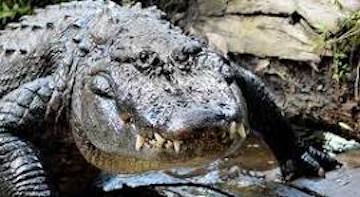Conservation Success Story: The American Alligator
Published 12:55 pm Friday, October 11, 2024
By James L. Cummins
Today, it is probably hard to believe that the American alligator was ever considered endangered; however, in 1967, there was such a drastic decline in the number of alligators that the U.S. Fish and Wildlife Service added the American alligator to the list of endangered species.
As early as the late 1800s, the American alligator was sought after by commercial hunters and trappers looking to make a living by killing and selling wildlife and their parts as commercial trade products. There were no regulations in place to protect the alligator, and once the value of a tanned alligator hide was fully recognized, the money and potential prestige far outweighed any perceived importance lent to the presence of alligators.
Trending
Shortly after being listed as endangered in 1967, Mississippi went to work on restoring the alligator population. Relying on cooperation from several surrounding organizations, the Mississippi Game and Fish Commission (MGFC) went about the task of trapping and relocating nearly 4,000 alligators.
Federal regulations, combined with the relocation efforts of the MGFC, were instrumental in the rebounding alligator population in Mississippi. Some of the alligator populations adjusted so well that they were found in areas they were not commonly found before the endangered species designation. In 1977, conservation officers reported finding alligators in 55 of the state’s 82 counties.
In 1987, the American alligator was removed from the Endangered Species List, and the Mississippi Legislature passed legislation giving the Mississippi Commission on Wildlife Conservation the authority to set regulations to manage alligator populations.
As alligator populations continued to abound in the Southeast, and nuisance problems were becoming chronic, hunting was determined to be a useful tool in population management. Louisiana was the first to enact an alligator season in 1972, followed by Florida (1981), Texas (1984), Georgia (2003), Mississippi (2005), Alabama (2006), Arkansas (2007), and South Carolina (2008).
In 2017, the record weight for the state of Mississippi was 766.5 pounds. That record was broken this past August 2023, when a group of hunters from the state captured a 14-foot, 3-inch monster that weighed in at 802.5 pounds! The largest taken American alligator ever recorded was captured in 2014 in Alabama. It measured 15 feet, 9 inches and weighed 1,011.5 pounds.
Alligator hunting season for the state of Mississippi opens on the last Friday in August and lasts for 10 days. Hunters that are granted the special permits are allowed to harvest 2 alligators over 4 feet long, with only one of them allowed to be over 7 feet.
Trending
The Mississippi Department of Wildlife, Fisheries, and Parks monitors alligator populations to efficiently manage hunting opportunities. It is important to remember that alligators are a natural and important part of our aquatic ecosystem in Mississippi; that is why it is vital that we maintain the proper balance.
James L. Cummins is executive director of Wildlife Mississippi, a nonprofit conservation organization founded to conserve, restore, and enhance fish, wildlife, and plant resources throughout Mississippi. Their web site is www.wildlifemiss.org.






